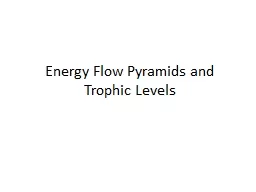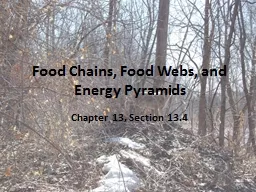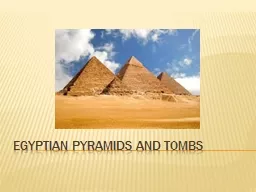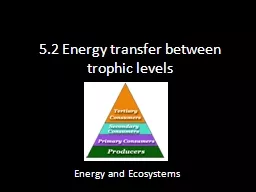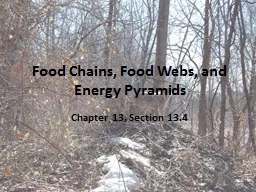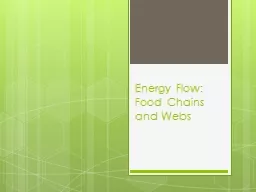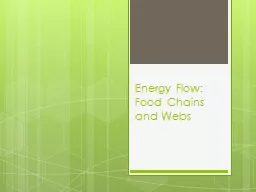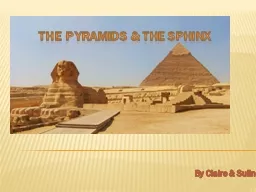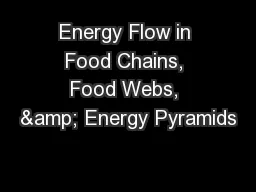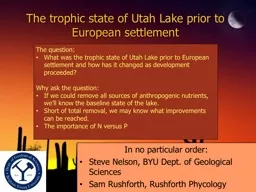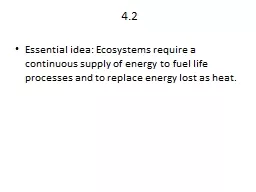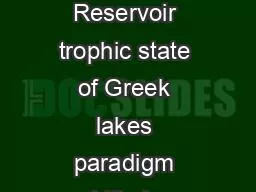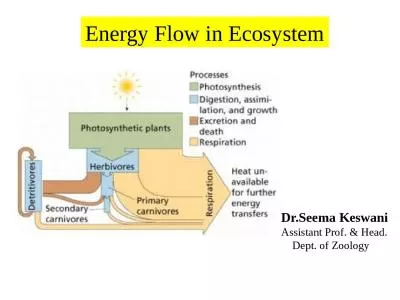PPT-Energy Flow Pyramids and Trophic Levels
Author : marina-yarberry | Published Date : 2018-03-13
TROPHIC LEVELS An organisms trophic feeding level is determined by the organisms source of energy There are 3 main trophic levels in a food web Autotrophs Heterotrophs
Presentation Embed Code
Download Presentation
Download Presentation The PPT/PDF document "Energy Flow Pyramids and Trophic Levels" is the property of its rightful owner. Permission is granted to download and print the materials on this website for personal, non-commercial use only, and to display it on your personal computer provided you do not modify the materials and that you retain all copyright notices contained in the materials. By downloading content from our website, you accept the terms of this agreement.
Energy Flow Pyramids and Trophic Levels: Transcript
Download Rules Of Document
"Energy Flow Pyramids and Trophic Levels"The content belongs to its owner. You may download and print it for personal use, without modification, and keep all copyright notices. By downloading, you agree to these terms.
Related Documents

